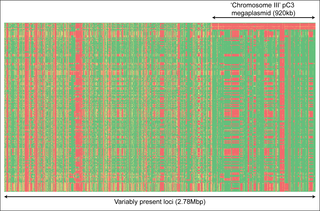PLOS Neglected Tropical Diseases ( IF 3.8 ) Pub Date : 2017-09-14 , DOI: 10.1371/journal.pntd.0005928 Erin P. Price , Derek S. Sarovich , Jessica R. Webb , Carina M. Hall , Sierra A. Jaramillo , Jason W. Sahl , Mirjam Kaestli , Mark Mayo , Glenda Harrington , Anthony L. Baker , Lindsay C. Sidak-Loftis , Erik W. Settles , Madeline Lummis , James M. Schupp , John D. Gillece , Apichai Tuanyok , Jeffrey Warner , Joseph D. Busch , Paul Keim , Bart J. Currie , David M. Wagner

|
The bacterium Burkholderia ubonensis is commonly co-isolated from environmental specimens harbouring the melioidosis pathogen, Burkholderia pseudomallei. B. ubonensis has been reported in northern Australia and Thailand but not North America, suggesting similar geographic distribution to B. pseudomallei. Unlike most other Burkholderia cepacia complex (Bcc) species, B. ubonensis is considered non-pathogenic, although its virulence potential has not been tested. Antibiotic resistance in B. ubonensis, particularly towards drugs used to treat the most severe B. pseudomallei infections, has also been poorly characterised. This study examined the population biology of B. ubonensis, and includes the first reported isolates from the Caribbean. Phylogenomic analysis of 264 B. ubonensis genomes identified distinct clades that corresponded with geographic origin, similar to B. pseudomallei. A small proportion (4%) of strains lacked the 920kb chromosome III replicon, with discordance of presence/absence amongst genetically highly related strains, demonstrating that the third chromosome of B. ubonensis, like other Bcc species, probably encodes for a nonessential pC3 megaplasmid. Multilocus sequence typing using the B. pseudomallei scheme revealed that one-third of strains lack the “housekeeping” narK locus. In comparison, all strains could be genotyped using the Bcc scheme. Several strains possessed high-level meropenem resistance (≥32 μg/mL), a concern due to potential transmission of this phenotype to B. pseudomallei. In silico analysis uncovered a high degree of heterogeneity among the lipopolysaccharide O-antigen cluster loci, with at least 35 different variants identified. Finally, we show that Asian B. ubonensis isolate RF23-BP41 is avirulent in the BALB/c mouse model via a subcutaneous route of infection. Our results provide several new insights into the biology of this understudied species.
中文翻译:

乌骨伯克霍尔德氏菌的系统地理学,基因组学和美罗培南敏感性分析
细菌伯克霍尔德ubonensis通常从环境样品携带类鼻疽病原体,共分离的类鼻疽伯克氏菌。乙。ubonensis在澳大利亚北部和泰国有报道,但在北美没有报道,这表明其地理分布与B相似。假马来虫。与大多数其他伯克霍尔德酒洋葱复合体(Bcc)种类不同,B。ubonensis被认为是非致病性的,尽管尚未测试其毒力潜力。B中的抗生素耐药性。ubonensis,尤其是用于治疗最严重疾病的药物乙。假性马来氏菌感染的特征也很差。这项研究审查了B的种群生物学。ubonensis,其中包括最早报道的来自加勒比海地区的分离株。264 B的系统生物学分析。ubonensis基因组鉴定了与地理起源,类似于对应不同的分支乙。假马来虫。一小部分(4%)的菌株缺少920kb染色体III复制子,在遗传高度相关的菌株之间存在/不存在不一致,表明B的第三条染色体。乌本像其他Bcc物种一样,可能编码非必需的pC3大质粒。使用B进行多基因座序列分型。假单胞菌方案显示,三分之一的菌株缺乏“管家” narK轨迹。相比之下,可以使用Bcc方案对所有菌株进行基因分型。一些菌株具有高水平的美洛培南抗药性(≥32μg/ mL),这是由于该表型可能传播给B引起的。假马来虫。在计算机分析中发现脂多糖O抗原簇基因座之间存在高度异质性,已鉴定出至少35种不同的变体。最后,我们表明,亚洲乙。乌本分离的RF23-BP41在BALB / c小鼠模型中通过皮下感染途径无毒。我们的结果为对该物种的生物学提供了一些新见解。



























 京公网安备 11010802027423号
京公网安备 11010802027423号